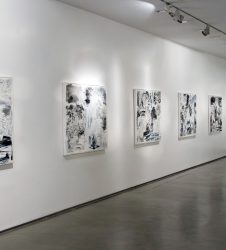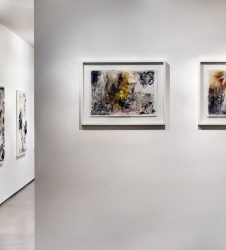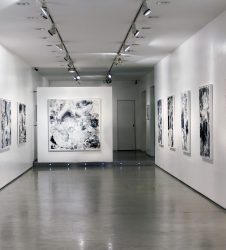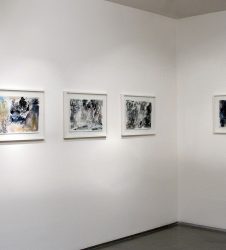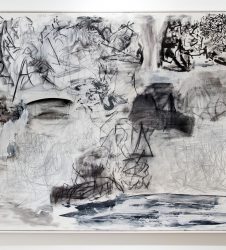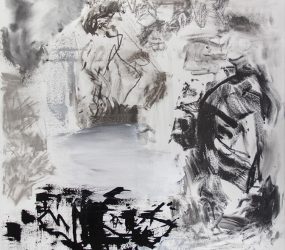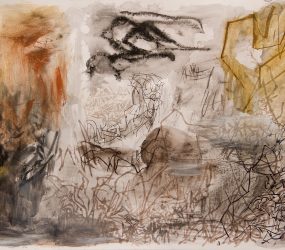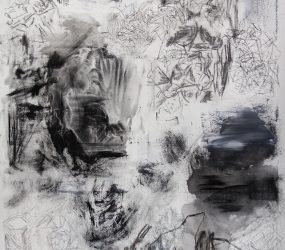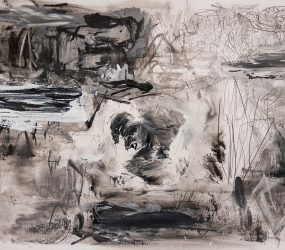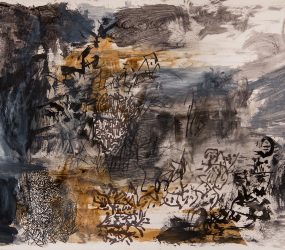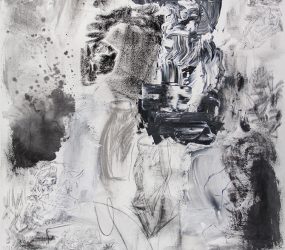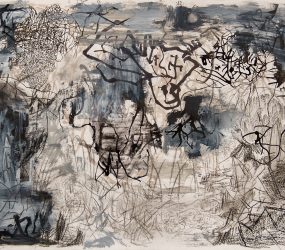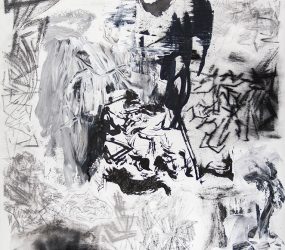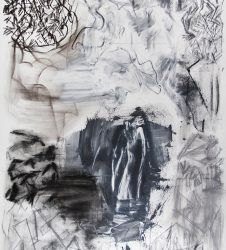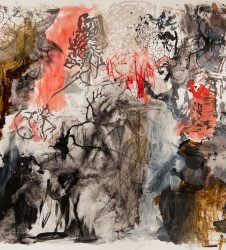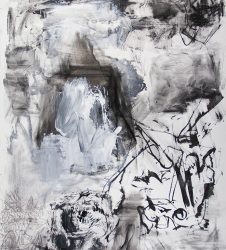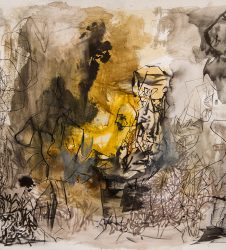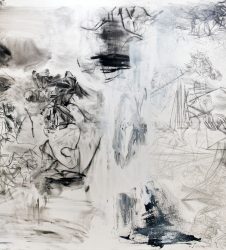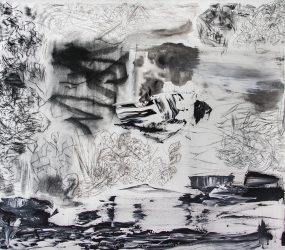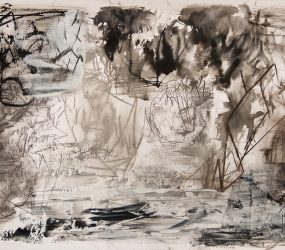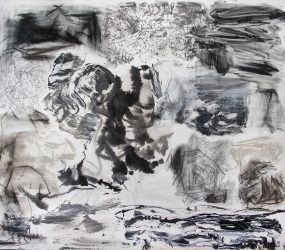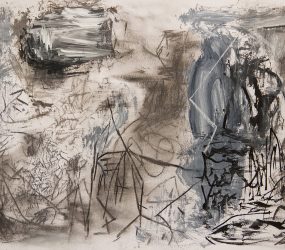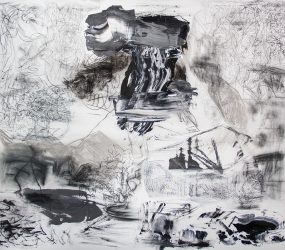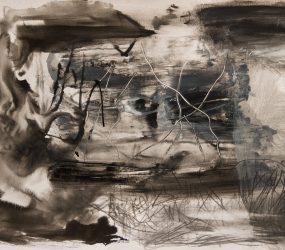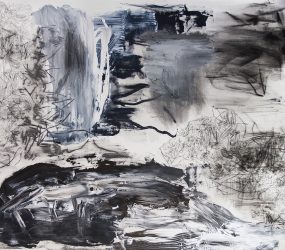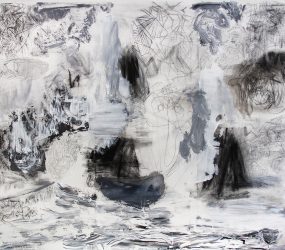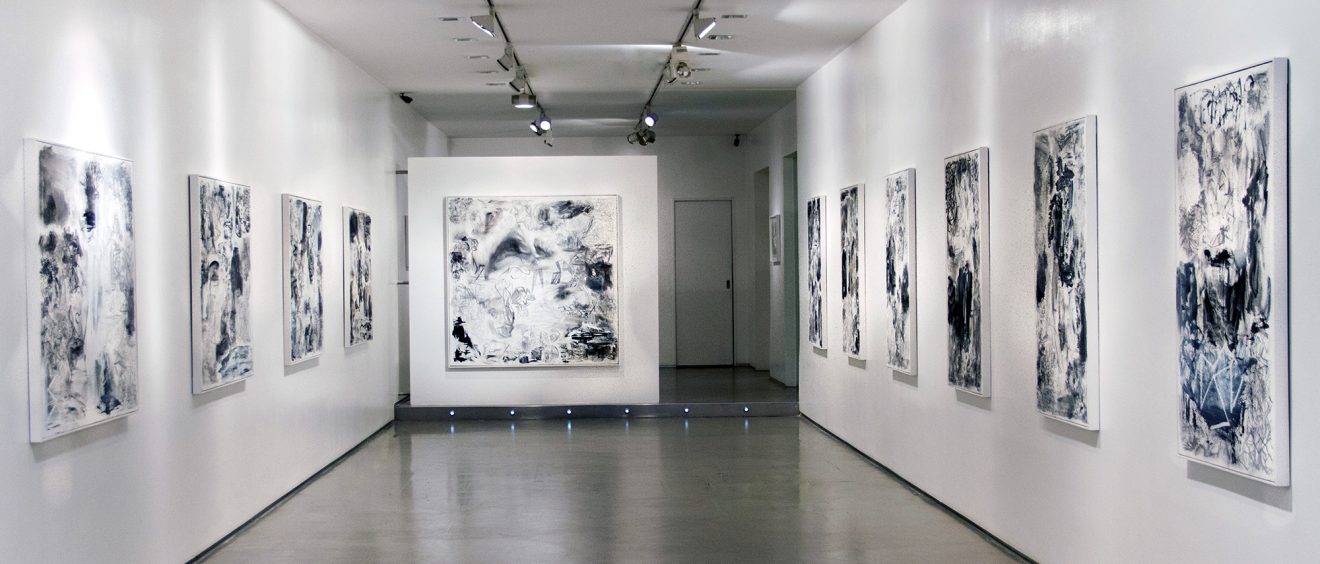
EDUARDO STUPÍA
SIMULACROS
Until June 24, 2023
–
According to etymology, the word simulacrum comes from the classical Latin simŭlācrum, which means “a resemblance or likeness, an image like an effigy, a portrait”. Likewise, simŭlācrum derives from the verb simulo, simularē, from similis, which means “to represent what is not, to pretend, to falsify, to imitate, to copy, to reproduce”.
–
On a set of horizontal and vertical canvases and small-sized papers, an eager counterpoint of strokes, spills, transparencies, wefts, superimpositions, textures, traces, splashes is developed. The hectic flow of a profuse graphic terminology offers addicted reading a territory of signs that act as if they assumed a course of vocationally nominative evidence, where they only pretend to do so.
–
In a disharmony of factors as much physical and tactile, as artificial and elusive, feigned adhesions to the skeletal remains of the reference provide minuscule glimmers of certainty. They are mirages in a world of visual objects that only resemble themselves, while they feign resemblances to the infinite things stored in the bazaar of the non-existent.
–
As simulacros without a model, they represent what they are not and advance playfully from similarities, through the necessary derivations that extract from the rhetoric of the genre just the clothing required to be something, or someone, without being it. And the look has no choice but to be an accomplice of this falsely specular polarity, in whose tacit extremes the dilemmas of form and meaning, matter and idea, image and archetype manage to survive.
–

